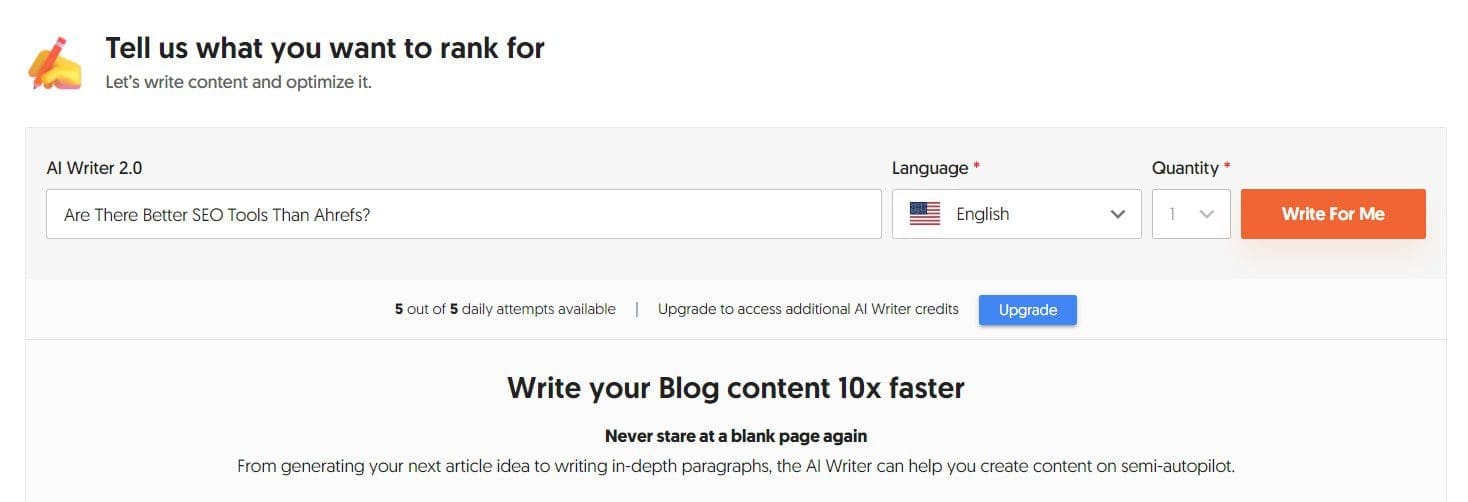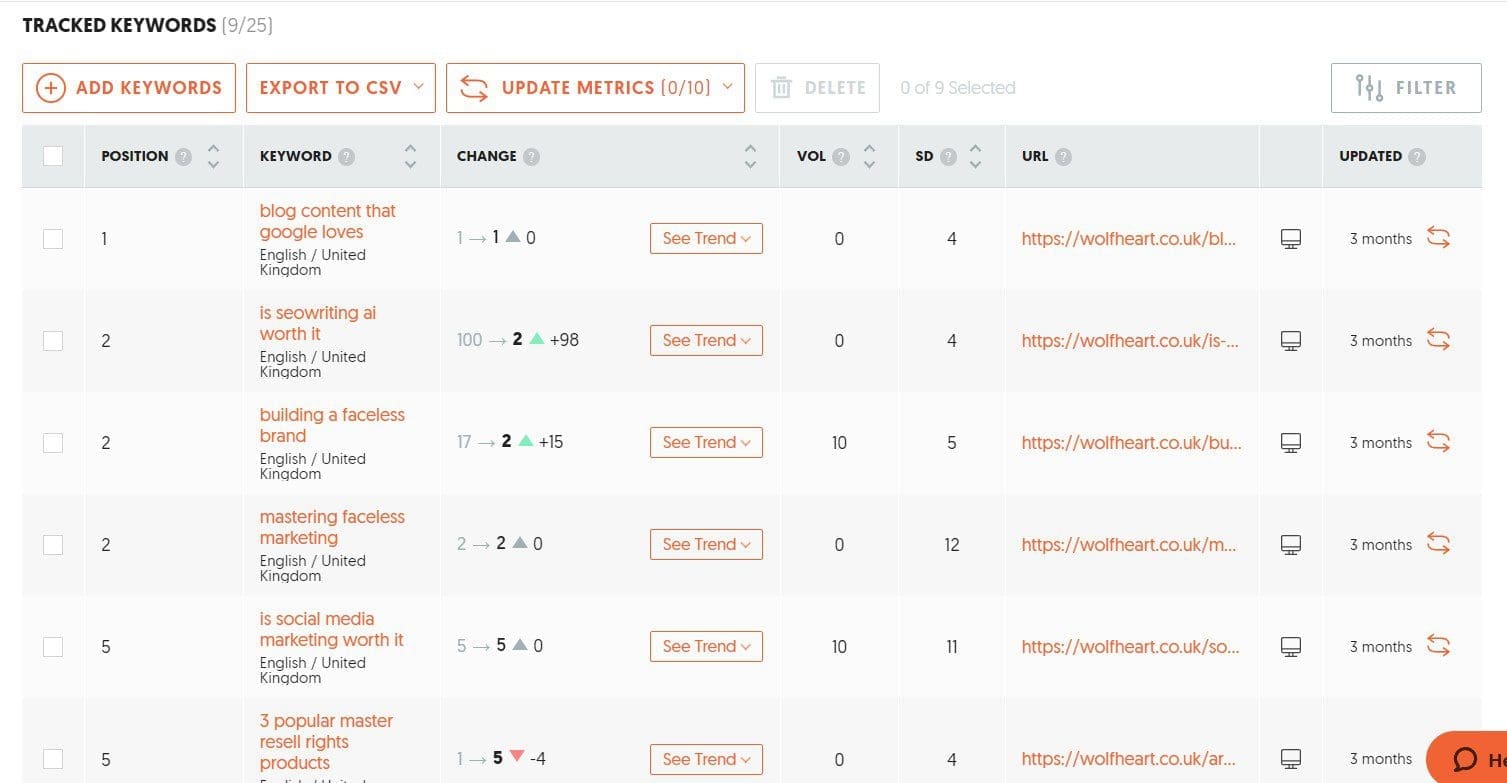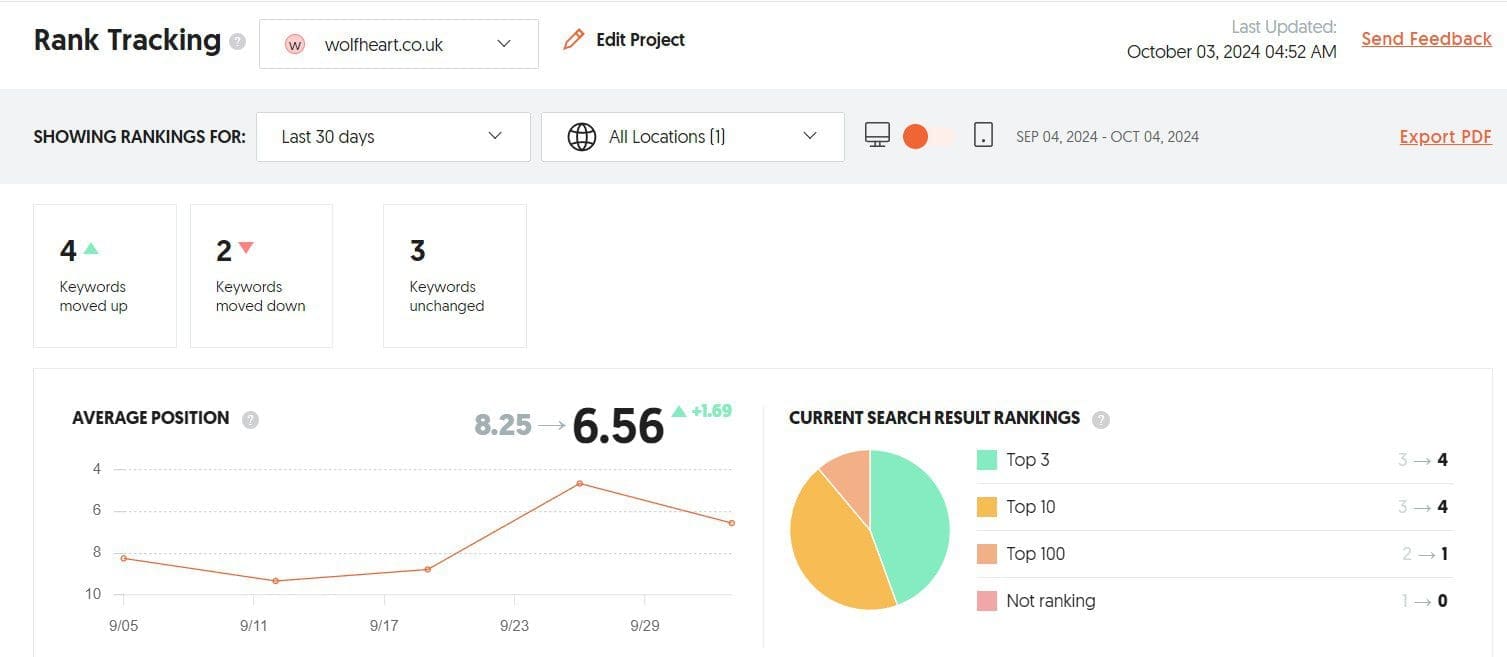Last Updated on April 24, 2025 by Jan Barley

Ahrefs Has Fantastic SEO Tools But There Are Alternatives for New Bloggers On A Budget
Ahrefs is one of the most popular SEO tools. It’s considered the heavyweight SEO platform for keyword research, content ideas, site audits, competitor analysis, and more. However, it’s costly, and people search for alternatives to Ahrefs.
This SEO tools comparison guide covers the best alternatives to Ahrefs, which are notably less expensive.
SurferSEO: Best On-Page Optimisation
SurferSEO vs Ahrefs?
SurferSEO is a different beast from Ahrefs. Still, if your goal is to write SEO content that ranks, it is one of the best I ever used. I wrote content up to 8,000 words with SurferSEO when I created crypto articles for Coin Bureau.
The article I wrote on “Crypto Trading Psychology” is still on page one of SERPs.
Search for that phrase and see for yourself.
SurferSEO is an in-depth SEO tool that has a proven track record.
SurferSEO Features & Benefits
Unlike traditional SEO tools focusing primarily on backlinks and technical aspects, SurferSEO’s unique selling point is its laser focus on on-page SEO.
It’s like having an SEO content optimisation guru beside you, guiding every word you write!
SurferSEO uses advanced algorithms to analyse top-ranking pages for target keywords, providing real-time suggestions to optimise your content.
This data-driven approach takes the guesswork out of content creation, ensuring that every piece you produce is spot-on for SERP success.
- Content Score: You know exactly how likely your content will rank because SurferSEO gives your content a score. The scale turns green when you’ve nailed it (usually at around 70%)
- Comprehensive SERP Analysis: SurferSEO doesn’t just tell you what keywords to use. It gives you insights into keyword density, how many headings to use, word count, and the number of images or videos that top-ranking competing pages use.
- Content Editor: The Content Editor provides real-time suggestions for improving your content’s SEO potential. It suggests relevant keywords and semantics and optimises your content.
For those of you like me, my favourite aspect of SurferSEO is that the keywords and semantics turn green when you have optimised them enough on the page.
Pricing: How Does SurferSEO Stack Up Against Ahrefs?
SurferSEO’s basic plan begins at $89/month (July 2024).
It’s an attractive option for smaller businesses or individual content creators who might find Ahrefs’ $129 pricing for Lite a bit steep.
However, note that SurferSEO and Ahrefs aren’t direct competitors in functionality. SurferSEO specialises in on-page optimisation, while Ahrefs offers a broader range of SEO tools.
Many SEO professionals use both tools in tandem for a comprehensive approach.
Pros and Cons: Is SurferSEO Right for You?
Like any tool, SurferSEO has strengths and limitations.
SurferSEO Pros
- Content Editor: Can save writing time. Always download and edit in Grammarly or equivalent & read out loud for auditory rhythm.
- Content Audit: Audit, evaluate and optimise your content.
- SurferSEO is Easy to Use: Its intuitive interface and actionable suggestions make it easy to create SEO-friendly content, even if you’re not an SEO expert.
- Ideal for Bloggers, Small Businesses & Content Creators: SurferSEO is affordable, and you can write up to 30 articles a month with the $89 package.
- Unlimited AI Detection: You want your published content to pass AI detection tests.
- Invite 2 Members: You can have up to two members on your SurferSEO content team.
For small to medium-sized businesses, bloggers, and content marketers, SurferSEO offers an excellent balance of functionality and affordability.
Larger enterprises or agencies with more complex SEO needs might find it helpful as part of a broader toolkit rather than a standalone solution.
SurferSEO Cons
- Content is Data-Driven: Be careful when mindlessly writing articles in SurferSEO because data-driven content can affect readability, content quality, and user experience.
- The Interface Can be Clunky: However, that might be my issue. I write my content in Word, run it through Grammarly and copy and paste it into SurferSEO.
- Limited to 30 Articles: If you’re a small blogger, 1 article a day is fantastic, but if you want more, you must upgrade.
Note: SurferSEO has a free Chrome extension to assess search volume, which is helpful. However, I advise prioritising user intent over search volume.
SurferSEO Trustpilot Score
SurferSEO has a Trustpilot score of 4.2 *
😊Try SurferSEO to Fastrack Your SEO Results
Please note: If you purchase a SurferSEO subscription, I may receive a small commission at no cost to yourself.
Ubersuggest: The User-Friendly SEO Companion
Ubersuggest, created by digital marketing guru Neil Patel, is an excellent alternative to Ahrefs for user-friendly SEO.
If you’re a fan of Neil Patel SEO tools, you will love Ubersuggest.
Ubersuggest has an intuitive interface that doesn’t sacrifice depth, allowing users to dive into SEO without drowning in complexity.
Please read my Ubersuggest review to learn more about this low-cost SEO software.
Ubersuggest Features & Benefits
- Keyword Research: It uncovers valuable long-tail keywords and provides search volume data, helping you target the right audience.
- Content Ideas: Coming up with content ideas can be tricky. Ubersuggest now has an AI content writer with the paid package.
- Site Audit: Scan your website for issues that could affect ranking.
- Backlinks Checker: Identify your backlinks. Check their domain authority and spam score.
Ubersuggest is not as in-depth as Ahrefs, but, for the low price for individuals, it’s perfect for the small blogger writing 2 or 3 articles weekly.
Pricing: How Does Ubersuggest Stack Up Against Ahrefs?
Ubersuggest is $29 for individuals and $99 for enterprise users (July 2024).
The free version offers much value but is limited to three keyword searches daily, and you don’t get access to the AI content writer.

Ubersuggest Content Writer Is Excellent Value on The Starter Package
Pros and Cons: Is Ubersuggest Right for You?
Ubersuggest does not have many pros and cons. It’s an excellent all-round SEO tool.
Ubersuggest Pros
- Low Cost: At $29/month, Ubersuggest is $100 cheaper than Ahrefs, and the SEO tools are more than enough for the small blogger.
- Digestible Format: It is easy to navigate the Ubersuggest interface. Ahrefs can be daunting for beginners.
- Actionable Insights: Ubersuggest tells you how to optimise your website for SEO success.
Ubersuggest Cons
- Data Volume Less Than Ahrefs: Ahrefs is the best for tracking volume. If you’re an advanced SEO user, you may find Ubersuggest limiting. That said, it’s spot on for new bloggers to gain experience.
- Not as in-depth: Ahrefs has multiple SEO tools you can use to assess the chances of your keywords ranking. Ubersuggest is effective, but there’s a reason Ahrefs is so expensive. That said, I found I hardly used many of the Ahrefs SEO tools.
Ubersuggest Trustpilot Score
Ubersuggest is a popular and successful SEO tool with a Trustpilot score of 4.6 *
😊 Open a FREE Account With Ubersuggest
Please note: If you purchase the paid version of Ubersuggest, I may receive a small commission at no cost to yourself.
SEOWriting AI: An Alternative to Ahrefs for the Lazy Blogger
If the idea of doing intensive keyword research or writing long-form content in SurferSEO, consider trialling SEOWriting AI.
SEOWriting does all the heavy lifting by writing the content for you using AI.
SEOWriting Features & Benefits
- 50 SEOWriting Generations: With the paid version, you can create up to 50 pieces of content
- Unlimited Words: Many AI writers limit the wordcount, which can become restrictive
- Bulk Generations: It takes time to write SEO content. SEOWriting AI can create it for you in bulk.
- Outline Editor: Get a shapely outline for your SEO blog content.
- GPT-40 and Claude 3 Opus: These are the AI used for the platform
Pricing: How Does SEOWriting AI Stack Up Against Ahrefs?
You cannot compare SEOWriting AI to Ahrefs, as it’s purely an SEO writing tool.
The starter package on the annual plan is $14/month and $19 if you pay monthly for 50 generations (July 2024).
The professional package gives you 250 generations and costs $59/month if paid annually and $79/month if you pay monthly (July 2024).
Pros and Cons: Is SEOWriting AI Right for You?
SEOWriting AI Pros
- Easy to Use: The interface is intuitive
- Bulk Create: Saves a ton of time writing SEO content
- Low Cost: From $14/month (July 2024)
SEOWriting AI Cons
- Mixed Reviews: Although SEOWriting AI scores 4.2 * on Trustpilot reviews, some users love the SEO tool, and others share a negative experience. One has to allow for user error, and SEOWriting AI responds to all reviews.
- It’s not a Keyword Research Tool: However, many people do not want the leg work of hunting for low-difficulty keywords, and it’s a perfect option.
SEOWriting AI Trustpilot Score
SEOWriting has a Trustpilot score of 4.2 *
Please note: If you purchase a SEOWriting subscription, I may receive a small commission at no cost to yourself.
Conclusion
SEO for small businesses is vital to bring customers to your business. Of course, we all want affordable SEO software, but should price factor in our decisions?
I’ve used all three Ahrefs alternatives, and my first choice for functionality and performance is SurferSEO.
This excellent SEO software has the highest Trustpilot score, and it performs. I’ve written dozens of SEO articles using SurferSEO. They all ranked in SERPs.
If budget is a concern, my next choice is Ubersuggest. At $29/month, it is an excellent value SEO tool.
Ahrefs is a fantastic SEO tool, but as a small business, I baulk at paying $129 a month when cheaper SEO tools can rank your content in SERPs, such as Ubersuggest, for a fraction of the price.
Using free SEO tools is great. The downside is it takes longer because you have to confirm data accuracy. For the sake of spending $29 to $89/month, you’d save a lot of wasted time.
Disclaimer: There are affiliate links on this page. If you make a purchase, I may receive a small commission.













